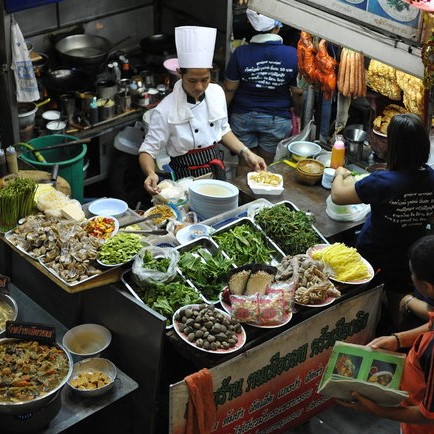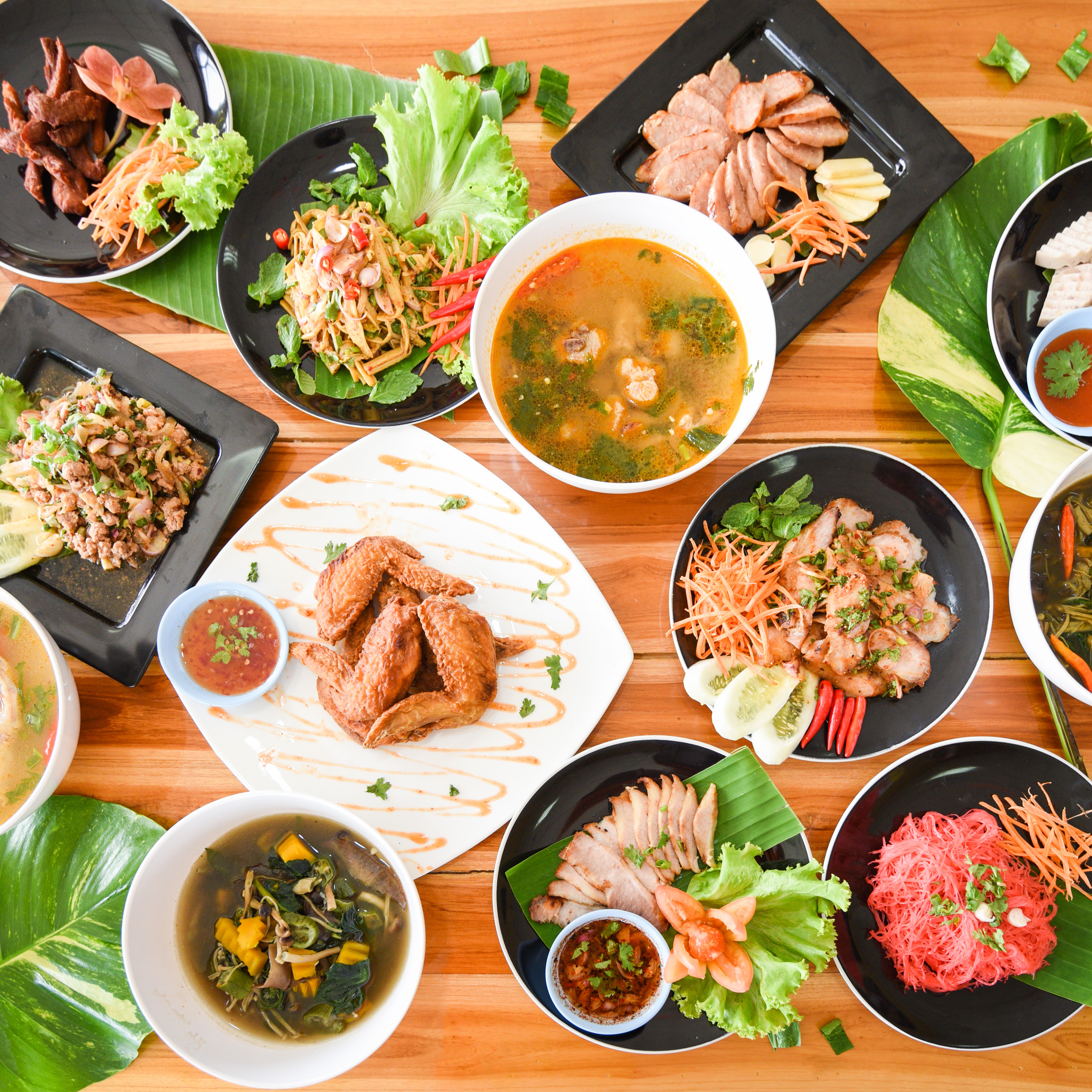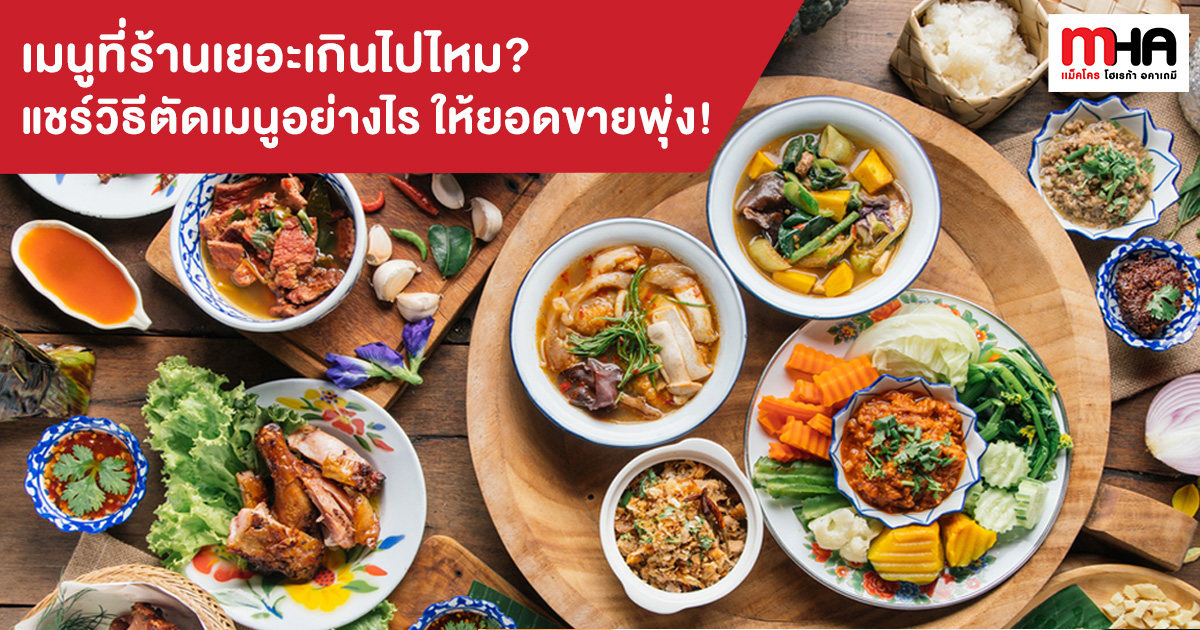Does Your Restaurant Have Too Many Items on the Menu? We’ll Share with You How to Trim the Menu to Boost Your Sales!
Restaurants usually need to evaluate their menus once a year to make changes or perk them up a bit. Revamping the menu has its advantages such as helping to control the cost and boost sales. Still, how do you consider which dishes you should cut out or keep? Let’s take a look.

The more you have on the menu, the higher the cost.
How many restaurants have a menu with 10 pages and 10 – 20 items on each page? The customers flip the pages back and forth trying to decide what to order. There are so many options. In the end, they settle on phat kaphrao (meat and basil spicy stir fry) or rat na (savory meat, vegetables and gravy over rice noodles). The same old dishes. What about the other dishes requiring that you stock up on ingredients? These are all costs entrepreneurs have to pay as they wait to sell.
This is why you should revive your menu every year. It’s so you can trim out the dishes that don’t sell so well and save on ingredient costs. Take the time to focus on the dishes that sell well and make profit so you can sell more. Otherwise, you could develop new dishes to replace the ones that have been cut out to make it interesting for customers.

Sales statistics will tell you which items to trim.
The reviving process is simple for restaurants using point of sale (POS) machines because they can just pull up the sales information from the first to the last day of the year to see which dishes have how many orders per day or month. This is why modern restaurants should use POS.
However, if you don’t have a POS machine, you have to create a sales recording system. Collect the order receipts for each day and record them into an Excel file or a notebook for a more manual approach. Whichever method you use, just make sure to record each day’s sales total so you have some data to use to revive your menu.

Just looking at the sales total is not enough. You have to delve into the costs to decide which items you can trim.
You can’t just look at which items sell well or don’t sell and cut them out just like that, because sometimes items that sell well might not make much profit and items that sell once in a while might make more profit for you than some of your best sellers.
So, an important factor in deciding what dishes to cut out or keep is the food cost per plate. Once an entrepreneur knows the cost per plate or per dish and the sales statistics for each dish, they can move on to the next step.
Learn professional cost-per-plate calculation techniques in our free online course, click
Lastly, use the BCG matrix.
Once you have the sales and cost per plate data, use these to categorize your dishes by using the BCG matrix. Categorize the food into the following four groups:
1 Cash Cow: High Sales, Low Profit
It sounds good, but when you look at the sales totals, you’ll see that you’d have to practically work for free for this group. This group sells really well, but generates very little profit. What you have to do with this group is find a new ingredient supplier source where you can negotiate for cheaper prices without lowering the quality.
2 Star: High Sales, High Profit
This is the star group of your restaurant, although it doesn’t mean you don’t have to do anything with this group, because it could suddenly move to another group one day. What you have to do is maintain standards and quality as you develop new dishes for this group to maintain your customer base. Most importantly, the dishes in this group should be promoted as recommended dishes, so customers will order them regularly.

3 Dogs: Low Sales, Low Profit
This is the group you have to consider whether to keep. If you find that the ingredients for the dishes in this group are specific and can’t be used for other groups, you should cut the dishes out to reduce costs and prevent waste.
4 Question Marks: Low Sales, High Profit
The dishes in this group waste your restaurant’s opportunities. Entrepreneurs have to analyze why customers don’t order these dishes because if they become more popular, the restaurant will make more profit.
It doesn’t end with just trimming. You also have to change your menu, so it looks “wow”.
And this is where the menu is revived. Once you’ve trimmed the menu and know which dishes aren’t profitable for your restaurant, the next thing you have to do is change the looks of your menu. You have to create a best-selling page that only shows the outstanding pictures of the dishes you really want to sell.

In addition, you should also advertise your dishes in front of your restaurant and on your tables to captivate your customers and, most importantly, what you can’t miss is teaching your employees to promote sales.
Click to read other articles here:
- Limited Seating Capacity; How to Strategize to Boost Sales
- Discounts for Better Profit! We Invite You to “Lean Your Whole Restaurant”; Reduce Chances for Financial Losses and Deficits
- Meal Kits, a New Sales Opportunity for Restaurants
- Save Costs, Create Cash Flow: A Restaurant’s Way to Survive
Click to read interesting articles by Makro HoReCa Academy



